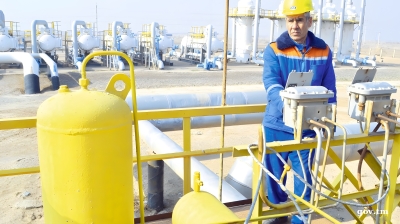The global shift towards fully electric ships is gaining momentum as electrification begins to make waves in maritime markets. There are a number of pioneering projects launched by shipyards and ferry operators in the Baltic Sea – a body of water that sees intense cargo and passenger traffic, and bordered by nine countries that have strong traditions of shipbuilding, including several with advanced tech sectors too.
Combined with government and EU incentives to turn ferry and shipping companies greener, that is spurring on investments into more environmentally friendly electric and hybrid vessels.
Baltic pioneers
Back in 2016, Latitude Yachts in Riga launched BB Green, the world’s first electric-propulsion air-supported vessel (ASV) and at the time the world’s fastest ferry powered by electricity.
Four years later, Estonia’s first hybrid ferry, the Tõll, started operation after TS Laevad, a subsidiary company of the Port of Tallinn, installed batteries on the vessel.
From summer 2022, another electric ferry has plied the route between Kamp on the German mainland and the Baltic island of Usedom.
Investments on a larger scale are also planned. Sweden-based Stena Line, one of the biggest ferry lines in the world, is also working towards electrification. The company’s PR and communications manager Stefan Elfström confirmed to bne IntelliNews that Stena Line has announced its intention to develop a fully electric ferry, dubbed the Elektra ferry concept, for launch by 2030.
Other investments in the Baltic area include the Viking Glory, the greenest passenger vessel of Viking Lines to date, and one of the greenest in the industry.
“Last year, Glory had a significant positive impact on all of Viking Line’s business operations. The new vessel was a real vitamin injection for both our customers and all of the company’s staff after the long years of covid. In uncertain times, a cruise is a safe way to get away from everyday life for a bit, and good demand has offset the effect of more expensive fuel,” said Viking Line’s senior vice president of corporate communications Johanna Boijer-Svahnström in a statement as the company marked the first anniversary of the ship's launch.
“For us, the new vessel is also a major investment in reducing our environmental impact in the long term and safeguarding our future business conditions. The EU is now setting much more stringent emission standards, so climate-smart vessels are key factors for our competitiveness.”
ABB which provided its Azipod propulsion system for the vessel. The same system is used in Wasaline’s new ferry Aurora Botnia, operated on the world’s northernmost all-year passenger route between Vaasa in Finland and Umeå in Sweden.

Viking Lines' Viking Glory carried more than 1mn passengers between Turku and Stockholm in its first year of operation. Source: Viking Line.
Also in the Baltic littoral country of Sweden, a new electric ship that claims to be the world's fastest is expected to start passenger trials in Stockholm in 2023, aiming to shorten commuting times between certain archipelagos by half. The Candela P-12, with capacity for 30 passengers, has been dubbed a "flying ferry" as it can reach speeds of up to 30 knots. It is also believed to be the most energy-efficient electric ship built to date.
Industry insiders interviewed by bne IntelliNews say they have seen a high level of interest in electric and hybrid vessels.
“There has been growing interest and demand for electric ferries in recent years, driven by concerns about the environmental impact of maritime transportation and the need to reduce emissions of greenhouse gases [GHGs] and other pollutants. Electric ferries are seen as a way to significantly reduce emissions and improve the sustainability of maritime transportation,” Patricia Irbe of Latitude Yachts told bne IntelliNews.
“In terms of future forecasts, it is expected that the demand for electric ferries will continue to grow in the coming years as technology advances and costs decrease.”
Electric Adriatic
Further south, Croatia, which also has a strong tradition of shipbuilding and ferry fleets serving its Adriatic islands, is also turning to electric ferries.
Jadrolinija, the national ferry company of Croatia, plans to introduce new electric ferries into its fleet by 2024. These ferries have been designed to carry 1,000 passengers and 156 cars each. Three Jadroplov vessels will be built in Split, and they are expected to be ready for service in two years. The ferries will travel between Split and popular islands, such as Brač, Vis and Korčula. The new Jadroplov ferries will not emit any harmful gases and will reduce journey times by 15-30 minutes in some cases.

Jadrolinija ferries near the Croatian port of Split. The company plans to add electric ferries to its fleet in 2024.
Split-based Classis worked on the Jadroplov ferries, having previously gained experience designing other electric ships.
“Demand for electric ships is on the rise, primarily due to lower operating costs and zero greenhouse gas emissions, which avoids paying additional taxes,” Predrag Cudina, managing director of Classis, told bne IntelliNews.
In January 23, Jadrolinija said it had launched a new public procurement procedure to build three electricity-driven passenger ships, whose estimated total value is €45mn. The ships will be co-financed using EU funds.
Shipyards in Central and Southeast Europe are also supplying other markets. In 2022, for example, Belgian inland vessel operator DAB Vloot ordered a new electric ferry from Estonia’s Baltic Workboats.
In February 2021 Romania’s Damen Shipyards Galati built a hybrid-electric vessel for Canada’s BC ferries to be deployed on the Nanaimo Harbour-Gabriola Island route. Later in the year, the Romanian shipyard delivered two fully-electric Ro-Pax ferries to the Ministry of Transportation of Ontario. The two are the “first fully-electric road ferries to operate in North America”, Damen said at the time.
Environmental benefits
Commenting on the environmental benefits of electrification, Palemia Field, global segment manager, ferries at ABB Marine & Ports, pointed to the saving of 23,000 tonnes per year (tpy) of carbon dioxide (CO2) from the electrification of two vessels for ForSea Ferries.
The retrofit of ForSea Ferries’ 1980s-designed Aurora and Tycho Brahe that operate on a busy route between Sweden and Denmark has turned them into the world’s largest emission-free electric ferries.
“With the two ships retrofitted in their fleet operating in full electric operation, ForSea estimate a saving of 23,000 tpy of CO2,” Field said.
There are other benefits too, she said. “Around the terminals, ships operating on energy storage have no engines making noise and vibration in port as well as the other emissions from combustion engines such as particulate matter and oxides of nitrogen.”
In the cargo sector, the Electric Eel transports freight on inland waterways in Lithuania. On the Klaipeda-Kaunas route, the Electric Eel is estimated to reduce the number of truck journeys per year by 10,000, which represents a savings of 5,580 tonnes of CO2, according to Christopher Cowan, senior sales manager at Western Baltic Engineering. On top of that, the reduction in heavy goods traffic on the roads reduces wear and tear and eases the traffic burden on public highways.
“The entire maritime industry is actively looking for ways to reduce emissions from within, and the Inland Waterways sector is also eager to share the benefits of intermodal transport as a way to cut overall CO2 emissions,” said Cowan.
Tech challenges to overcome
Undoubtedly, electric vessel technology is evolving, but more advances are needed to allow electric ferries and other vessels to operate over longer distances and under a wider range of conditions.
Currently, battery capacity limits electric ferries to shorter routes, as does onshore charging capacity.
“We are fully committed to get there [to launching electric ferries]; however, there are external factors outside our control that need to be in place for this to become reality,” Stena Line’s Elfström said.
“One factor is the battery technology for vehicles in the size of a RoPax ferry; another one is the charging of such a ferry – the development of this infrastructure is not yet in place but we are determined to be ready when this is in place.”
“Electric ships are limited by the autonomy of navigation, as current generations of batteries enable navigation without recharging up to about 300 nautical miles [556 km]. Therefore the use of electric ships is limited to coastal seas,” Cudina told bne IntelliNews.
“One of the biggest challenges facing the adoption of electric propulsion in ships is the limited energy storage capacity of batteries. This can limit the range of electric-powered ships and make them less suitable for longer voyages,” agreed Irbe.
However, she noted that some of the challenges are “more significant for larger ships, such as cargo vessels and cruise ships, while smaller ships such as ferries, tenders and water taxis are more feasible to be powered by electric propulsion”.
“Fully electric ferries are dominating the discussions we are having with operators who have a maximum crossing of about 40-50 nautical miles [74-93 km]. Can they be done, how does co-ordination work with the shore electrical grid and what can be done with the ferry itself in order to reduce energy consumption in a holistic manner,” said ABB’s Field.
Field noted that the situation with onshore charging will likely improve too. “We are … seeing ports being more engaged in the discussion around shore power for charging. This has been a major hurdle that is starting to be overcome,” she added.
Ships of the future
Ultimately international cargo shipping will have to shift to electric power too if global emissions targets are to be met, and there have been breakthroughs in this area too.
In early 2022, the Yara Birkeland, dubbed as the "Tesla of the seas”, was put into commercial operation from Porsgrunn, Norway. The cargo ship is both fully electrified and fully autonomous. Powered by a massive 7-MWh battery, charged by Norwegian hydropower, the vessel has the capacity to transport slightly over 100 containers.

Yara International worked with technology company Kongsberg to build the world's first autonomous and zero-emission container ship, the Yara Birkeland. Source: Yara.
While the Yara Birkeland is smaller than many cargo ships currently in operation, and costs around three times the price of a comparable conventional ship, being powered by electricity means its operational expenses will be 90% lower.
Yara, the Norwegian fertiliser manufacturer that launched the ship, anticipates that it will replace around 40,000 diesel-powered truck journeys a year.
But going electric is just part of the green revolution in shipping, with some of the cargo ships currently under development incorporating solar and other renewables technologies, as well as reviving the sail in an ultra-modern form. NYK’s futuristic Eco Ship 2030, for example, will incorporate multiple green technologies including solar cells, sails and fuel cell technology. Similarly, Eco Marine Power is developing ships powered by rigid sails fitted with photovoltaic cells.

Eco Marine Power's new Handymax bulker incorporates a range of renewable energy solutions and energy saving devices based on technologies either currently available or under-development. Source: Eco Marine Power.
Ferries on shorter routes are the first part of the puzzle when it comes to the switch to electric technologies in shipping. The coming century will see a much broader transition in the global shipping industry.
Features

Washington has a new focus on a Caspian energy play
For most of the last three decades since winning independence, Central Asia has been a bit of a backwater. Not any more. The Trump administration is becoming more focused on Turkmenistan's vast gas reserves and can smell money and power there.

BOTAŞ and Turkey’s hub ambition: from “30-year dream” to cross-border reality
For Ankara, the symbolism is as important as the molecules: Turkey’s energy map is shifting from end-market to hub.

Indian bank deposits to grow steadily in FY26 amid liquidity boost
Deposit growth at Indian banks is projected to remain adequate in FY2025-26, supported by an improved liquidity environment and regulatory measures that are expected to sustain credit expansion of 11–12%



